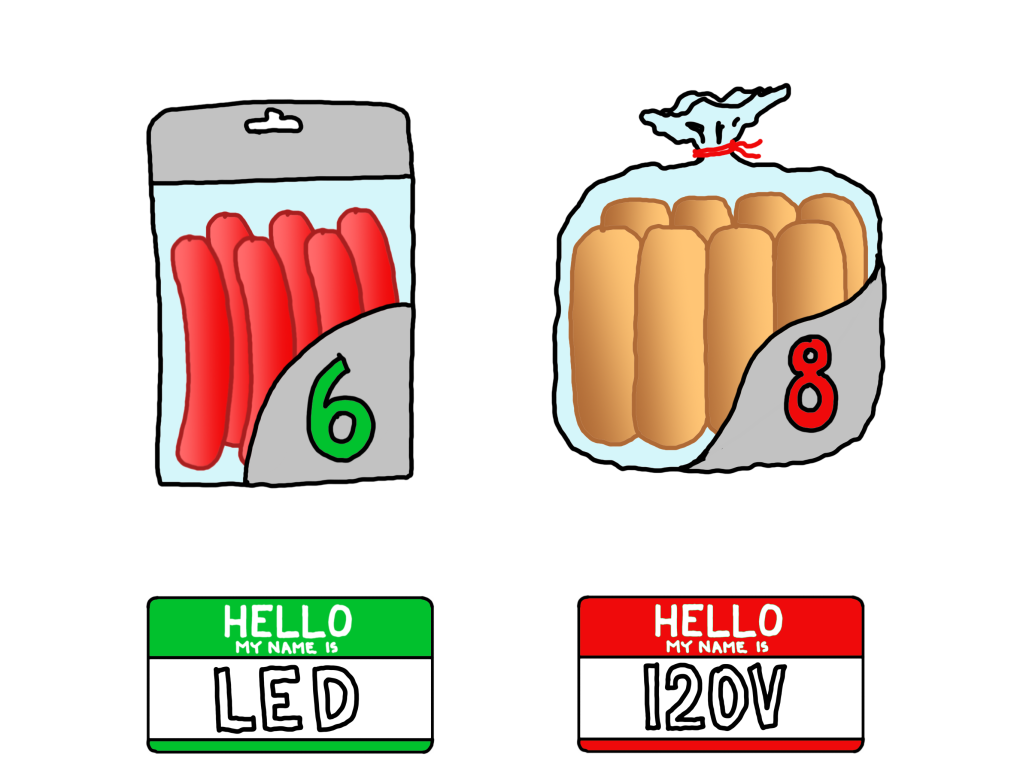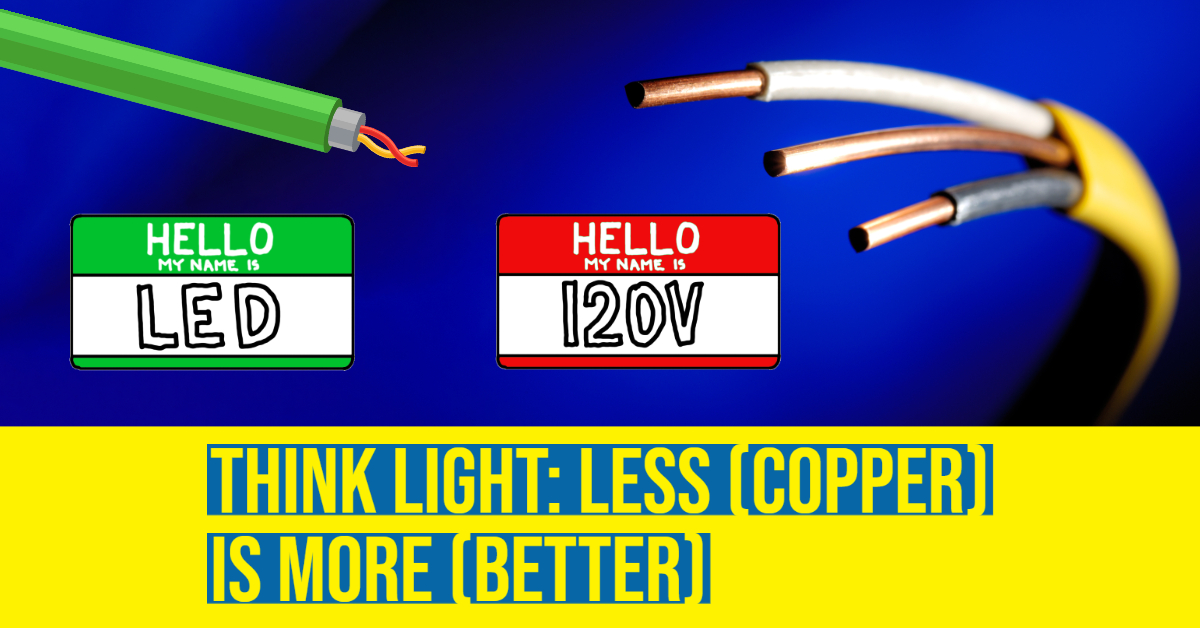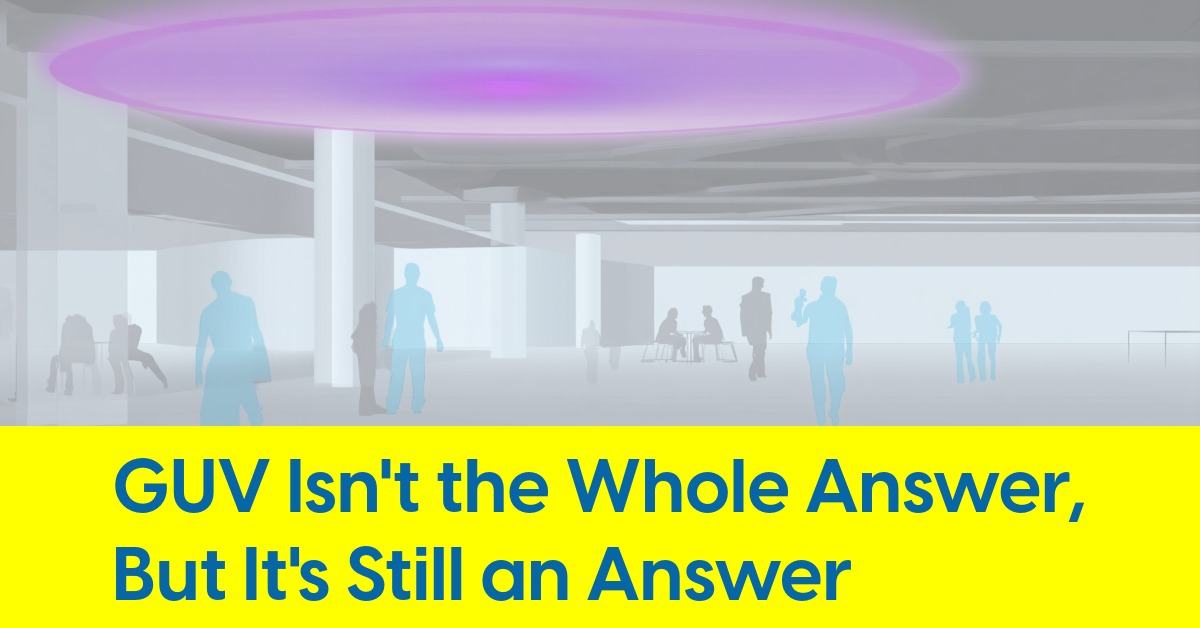November 30, 2022
THINK LIGHT: Less (Copper) is More (Better)
Author: David Warfel, Light Can Help You
David Warfel makes the case that using line voltage wiring for LED lighting is overkill

I am working on a article extolling the virtues of low voltage power distribution and I find myself wondering, as Mike Teolis from Colorbeam said, “can anyone give me a valid reason why we need 120 volt infrastructure for a 14 watt LED putting out 1000 lumens?”
I love to geek out on lighting technology and ideas, but admittedly am rather limited when it comes to the nuances of power and distribution. In my first job out of college I built and wired houses, pulling miles of yellow-jacketed “romex” cable from room to room, from light to switch, from receptacle to panel. I loved it, but I quickly ran up against the limits of my intelligence. Every time I had to wire a 3-way switch I had to draw out the wiring on a scrap of lumber so I would get it right. It just didn’t stick.
So when it comes to low voltage lighting power (48 volts or less), I had a few simple ideas of why it makes sense, mostly along the lines of substituting a hundred cheap power supplies that are prone to failing with a few robust power supplies in an easy-to-access utility room. Long term maintenance seemed to be the biggest benefit of low voltage lighting, and as a designer I care more about what comes out of the fixtures than how they are powered. I can deliver awesome lighting at 120 volts or 24 volts or 48 volts. Doesn’t matter.
Or so I thought.
I’m sure I have tested the patience of folks like Mike from Colorbeam and Derek Cowburn of Lumencache as I seek to build a more convincing argument for ditching the traditional 120 volt lighting infrastructure in favor of low voltage power. I have not finished the article, but I did end up convincing myself.
It really comes back to what Mike said…”can anyone give me a valid reason…” and I might edit his comment to end “why we need firehoses to fill drinking glasses with water?” It just doesn’t make sense to overbuild our infrastructure when the likely future is not one of higher electricity usage by lighting but lower.

Building with line voltage wiring is a little bit like building a foundation ten times as deep with ten times as much concrete. It doesn’t make a difference in how the house operates – so long as you have a solid foundation below the frost line, that extra concrete is a bit like taking money and burying it in the dirt. It’s useless.
Wiring up a light fixture that sips 14 watts with enough copper to power 1400 watts is a bit of overkill. But does it really matter? Is there any harm to continuing with the status quo and wiring up our lighting circuits with 14/2 or 12/2 copper?
There seems to be a convergence of three movements that point away from line voltage and towards low voltage wiring.
The first movement is the growth of lighting that supports human wellness. Circadian-inspired lighting is just one element of this movement, but perhaps the best known. Every single LED light fixture that supports color-tuning is inherently low voltage, and most need low voltage control cables. In other words, we can send low voltage wiring AND line voltage wiring to a color-tuning fixture that helps our biorhythms, but we can also do it without the line voltage circuit altogether. As we continue to adopt lighting that follows the natural cycle of the sun, more and more of our light fixtures will require low voltage lighting.
The second big reason to go low voltage is to get better lighting in the hands of more people, the reason our design company exists. Simply put, low voltage power distribution can be less expensive than line voltage. It is tough to find skilled laborers to build all the houses needed to fill the shortage; low voltage wiring can be pulled by non-licensed professionals with less training than line voltage because it is inherently safer. And the cost of the wire itself plummets when adopting low voltage lighting infrastructure, by 50% or more. Imagine a world where disc lights are replaced with color-tunable low-voltage downlights that do a better job illuminating the space and supporting the wellness of the occupants, all without the exorbitant price tag. That’s a future I’d like to see happen.
The third reason is the one I personally find the most compelling: our planet has finite resources. Derek Cowburn ran case studies for Lumencache that found 1200 feet of 120v wiring is used for lighting in a typical home. Substitute low voltage wiring and that goes up to 2400 feet…yet because the conductors are so thin it results in a sixty percent reduction in copper usage.
If we keep wiring our lighting circuits with extra copper, we are mining the copper, refining it, transporting it to factories, pulling it into wires, shipping it to job sites, and installing it…and leaving 50% of its capacity unused forever. We are wasting half of our copper for lighting. We cannot get it back.

Okay, I had better wrap this ramble up. But if I really care about human wellness, better lighting for everyone, and the health of our planet, I should probably be doing more low voltage lighting.
Can anyone give me a valid reason not to?
Read more THINK LIGHT posts HERE.
Read a related post on low voltage lighting HERE, where I spend a little more time on the maintenance discussion.
About the Author:
David Warfel is an overly sensitive, marginally materialistic, pseudo-tree-hugging Midwestern farm boy turned lighting designer, educator, author, and entrepreneur. He’s been either lucky or talented enough to land design opportunities in residential, hospitality, museum, commercial, and even the super-niche escape-rooms-on-giant-cruise-ships industry. When he isn’t boring someone to tears talking about lighting, David leads the quirky design business, Light Can Help You, into new frontiers in search of better lighting for more people.











